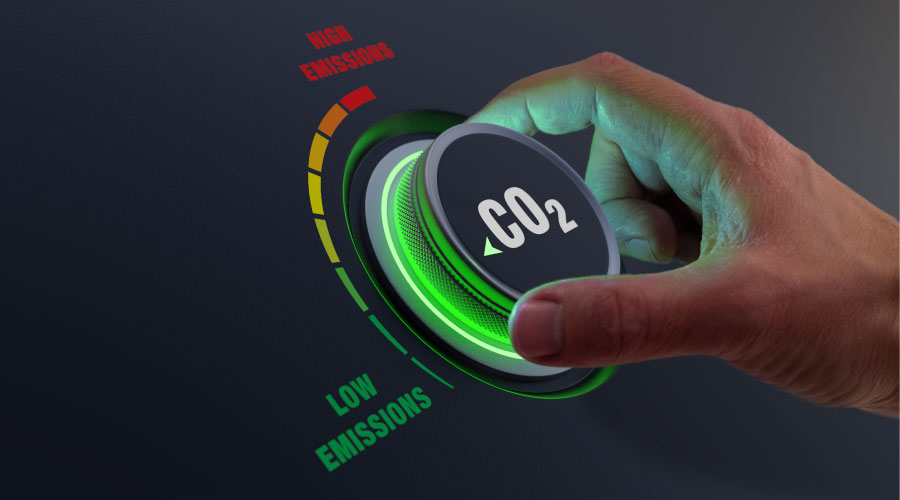How Can PACE Help Finance Energy Efficiency Projects?
Driven by corporate sustainability goals, facility managers have been turning to PACE financing to upgrade aging equipment and reduce operating expenses
By Michele Pitale, M.D., Contributing Writer
Facilities are at an inflection point as more facility managers look for ways to make their buildings more sustainable. Energy efficiency is an important factor as owners think about how to squeeze more value out of their buildings. Green financing programs offer the chance to install green technology, like solar panels, co-generation, efficient HVAC systems and building automation to help make buildings more profitable as well as environmentally responsible. Market demands for green buildings present an opportunity to position a real estate portfolio for superior returns versus non-responsive competitors, but limited available CAPEX and a competitive lending environment constrain opportunities.
There are three main outside financing strategies owners can take when making these improvements: power purchasing agreements (PPA), efficiency service agreements (EaaS and ESA) and property assessed clean energy (PACE) financing. Institutional investors and large capitalized sponsors are entering the commercial PACE market seeking solutions for new construction, renovations, and ESG portfolio issues with significant benefits over traditional debt financing. In a financial environment with limited available CAPEX, C-PACE represents an opportunity for early adopters.
C-PACE
C-PACE (commercial property assessed clean energy) is a voluntary tax assessment repaid through the property taxes a that has emerged in the financing of new construction and energy efficiency to become a staple of commercial real estate finance. Through public/private partnership, this financing takes advantage of the local municipality taxing mechanism to provide fixed low-rate capital that is self- amortizing over the useful life of the equipment, usually 25-30 years. One hundred percent financing of projects includes all soft costs, design, engineering, labor, equipment, and all related work so that there is no money out of pocket for the owner.
C-PACE financing overcomes typical barriers to gaining C-suite approval for projects by offering interest rates often competitive with institutional capital. Fixed repayments are typically collected with regular local real estate taxes with the ability to defer repayment for years until utility savings accrue and all tax incentives have been received by the facility.
Some initial points to consider:
- Facility owns the equipment: While PACE can fund a power purchase agreement (PPA), lease, or energy savings agreement, typically PACE is used by owners who wish to own the equipment themselves. This allows the owner to receive all tax credits and incentives. Of note, prepaid maintenance and service contracts may be included in the financing.
- Based on property’s financials, not owner’s credit: As a property tax, there is no credit impact and underwriting not dependent upon the owner’s credit so non-investment grade and private companies qualify for C-PACE financing.
- Repayment can be deferred for years: This ability to defer the start of repayment for years allows time to accrue operational savings, tax incentives and rebates from installation of upgraded energy generation or more efficient equipment. In new construction, the delayed start of repayment allows a long runway for lease-up or for a property to start generating revenues.
- Repaid as OPEX not CAPEX: A PACE assessment is a non-ad valorem assessment, equivalent to a sewer tax, and may be accounted as an off-balance sheet expense by some tax advisors.
- Repaid by tenants: Depending upon terms of lease, the annual C-PACE assessment may be passed through to tenants resulting in zero-cost equity. This pass-through is a benefit to tenants as they also realize the decreased utility costs for efficiency upgrades which typically exceeds the annual repayment of the PACE. Tenants also benefit from resiliency from grid outages from projects that provide on-site power generation.
A number of facility managers have turned to PACE financing to meet their energy goals. The owners of these properties include public investment grade corporations as well as smaller companies. They have found PACE a low-cost financing source for HVAC upgrades, roofing, generators, additions, seismic retrofits as well as renewable generation projects.
Since 2014, many facilities have used PACE to finance solar projects without utilizing CAPEX including Anheuser-Busch’s Golden Road Brewing in Anaheim. C-PACE financing of energy efficiency renovations in facilities has notable transactions of $49.5 million used by a network of five facilities in California and $42 million for an acute care hospital in Rhode Island. Recent trends show facilities utilizing PACE to have the capacity for Net-Zero energy such as JBS USA’s used of PACE to help meet their corporate sustainability goals.
The increasing success of PACE financing has led to widespread adoption and some states have expanded its use to include resiliency projects such as wind, fire, flood and seismic upgrades. As a public private partnership to advance the common good, other projects may be allowed as directed by state and local legislators to expand the use of PACE to help finance local initiatives such as wildlife pathways and parking garages to preserve undeveloped land.
Energy efficiency is becoming an important factor as owners are thinking about how to squeeze more value out of their buildings. Green financing programs give owners the chance to install green technology, like solar panels, efficient HVAC systems and LED lights. In turn, those improvements lower costs and help make buildings more profitable. City mandates to green properties or increase resiliency, maturing debt in a high interest rate environment is fueling the growth of PACE.
The market is always looking for something that adds value and right now, PACE is emerging as a major source of liquidity to lower the cost of capital and to provide liquidity for CRE investors. PACE is a financing tool with 100 percent financing that can help many facility managers gain corporate approval for projects that were previously denied due to low payback and high CAPEX costs and this advantageous new financing has led to the recent explosion of corporate PACE financing for their facilities.
Michele Pitale, M.D., heads the PACE financing and is Managing Director with Counterpointe Sustainable Real Estate (CounterpointeSRE).
Related Topics:












